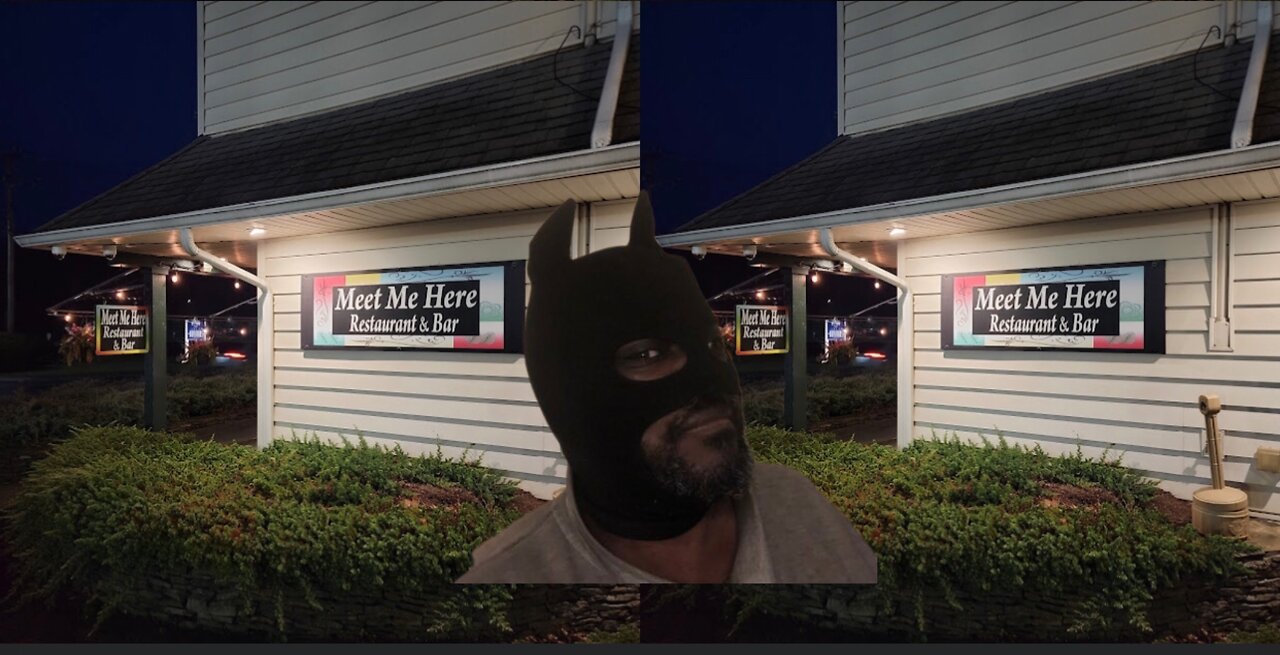Premium Only Content

Racism In The Meet Me Here Restaurant In Middlebury Connecticut
My Brothers And Sisters, It Is Time To Boycott The Meet Me Here Restaurant In Middlebury Connecticut, The Same Connecticut State Where The Sandy Hook’s Shooting Happened In 2012. #themeetmehererestaurant #middleburyconnecticut #viral #viralvideo #viralvideos #SandyHookElementarySchoolshooting #snadyhookselementaryschool
Racism in restaurants in America is a serious and ongoing issue that reflects broader patterns of racial inequality in society. It affects both customers and workers, manifesting in subtle biases as well as overt discrimination. Here’s a breakdown of how it appears and why it persists:
1. Discrimination Against Customers
• Unequal service: Studies and firsthand accounts show that Black, Latino, Asian, and Indigenous diners are often treated less favorably—waiting longer to be seated, receiving slower service, or being given less desirable tables.
• Stereotyping: Some servers assume customers of color will tip poorly, leading to poorer service or even refusal of service.
• Dress code enforcement: Restaurants sometimes enforce “dress codes” selectively to exclude certain racial groups, particularly young Black men.
• Racial profiling: Customers of color may face more scrutiny, be asked to prepay for meals, or be suspected of intending to steal or cause trouble.
2. Discrimination Against Workers
• Hiring and promotion bias: White workers are often hired for visible roles like servers or bartenders (which usually earn more through tips), while workers of color are pushed into back-of-house jobs like dishwashing or cooking.
• Pay disparities: Even within the same roles, employees of color frequently earn less and are promoted less often.
• Harassment: Workers of color report racist remarks from customers, managers, or coworkers—sometimes dismissed by management as “just part of the job.”
• Retaliation: Employees who speak out against discrimination often face retaliation or are ignored.
3. The Tipping System and Structural Racism
The U.S. tipping system itself has racist origins—emerging after the Civil War when Black workers were often denied wages and forced to rely on tips instead. Today, tipped workers (especially women of color) still face economic instability and discrimination because of this system.
4. Examples and Incidents
• Viral videos have shown incidents of customers of color being asked to prepay or leave restaurants for no valid reason.
• Investigations (e.g., by the Equal Employment Opportunity Commission) have revealed patterns of racial harassment and segregation in major restaurant chains.
• Studies by organizations like Harvard Business Review and Restaurant Opportunities Centers United show consistent racial bias in both service and employment practices.
5. Efforts Toward Change
• Training and education: Anti-bias training for restaurant staff and managers.
• Policy changes: Some restaurants are eliminating tipping, setting transparent pay scales, or auditing hiring practices.
• Public accountability: Social media has increased visibility of discriminatory behavior, pressuring restaurants to respond.
• Community organizing: Groups like One Fair Wage and Race Forward advocate for racial and economic equity in the restaurant industry.
6. What Can Be Done
• Support restaurants that demonstrate equitable hiring and pay practices.
• Advocate for wage reform and anti-discrimination laws in hospitality.
• Hold businesses accountable when racism occurs.
• Listen to and amplify the voices of restaurant workers and customers of color.
And Also My Brothers And Sisters, If You Want To Support The Work I Do On My Excellent Videos And All, Here Are My Links To My CashApp And PayPal To 👇
-
 13:15
13:15
Cash Jordan
7 hours ago"INVASION" Mob STRIKES Chicago Jail… FRONTLINE Marines IGNORE Judge, SMASH Illegals
19.6K35 -
 LIVE
LIVE
SpartakusLIVE
4 hours ago#1 Solo Challenge CHAMPION entertains HERDS of NERDS
252 watching -
 LIVE
LIVE
Alex Zedra
3 hours agoLIVE! New Game | DeathWatchers
188 watching -
 2:59:47
2:59:47
Nikko Ortiz
4 hours agoShotguns With A Magazine... |Rumble Live
12.1K -
 23:18
23:18
Lady Decade
9 hours agoThe Diversity Lie Gaming Refuses To Talk About
10.2K6 -
 2:41:05
2:41:05
Geeks + Gamers
4 hours agoGeeks+Gamers Play- MARIO KART WORLD
8.41K1 -
 5:33:12
5:33:12
Midnight In The Mountains™
7 hours agoGaming w/ Midnight | Studio is BACK and SO ARE WE | 3 AWAY FROM 1,500 WILL YOU GET ME THERE?!
4.97K3 -
 1:51:13
1:51:13
Glenn Greenwald
8 hours agoTucker Carlson Speaks at Turning Point, Prompting Cheers and Controversy; More Evidence of Israeli Atrocities Amid Fragile Ceasefire; Tommy Robinson Submits to Re-Education in Israel | SYSTEM UPDATE #536
104K106 -
 3:14:42
3:14:42
SOLTEKGG
4 hours ago🔴LIVE - BATTLEFIELD 6 GIVEAWAY
2.22K -
 12:12
12:12
ARFCOM News
8 hours ago $2.61 earnedThe REAL Reason Glock Bent The Knee + Searched Just For OWNING A Gun?!? + Lemon's Cringe 2A Mistake
11.5K9